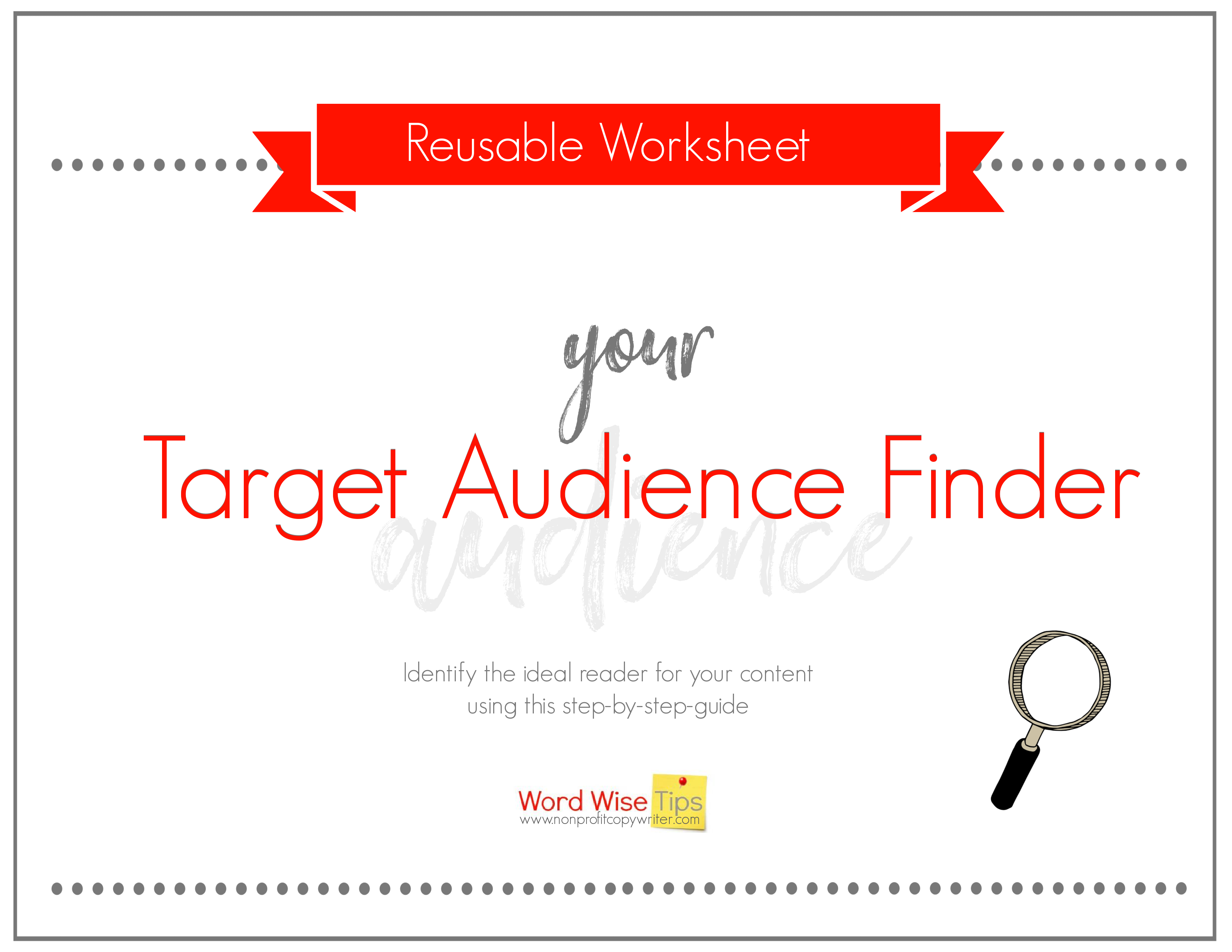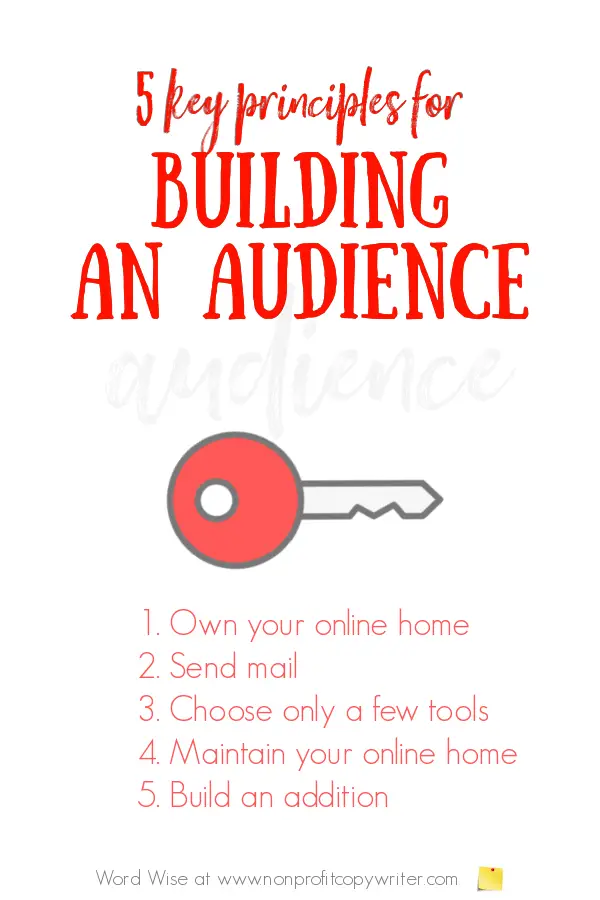Save Time: Get 5 Simple Writing Tips
you can put to use in 10 minutes
5 Tips for Building an Audience When You’ve Just Started Writing
Award-winning writer Kathy Widenhouse has helped hundreds of nonprofits and writers produce successful content , with 750K+ views for her writing tutorials. She is the author of 9 books. See more of Kathy’s content here.
Posted 10.28.25
“I’m reaching out for your advice.” I’m not sure how the sender found me, but he sent an insightful question. “What guidance would you give yourself about building an audience if you were just starting out today as a writer?”
He went on to explain that he had a day job, and he understood the path to writing success can be long. “I’ve only scratched the surface of marketing my writing business,” he wrote. “But I want to grow my passion strategically as I dive in.”
This fellow was already operating strategically. He was asking good questions. And he knew he had lots of work ahead of him.
Maybe you share his conundrum: you want to grow your writing business. Where should you invest your energy and time as you’re just starting out as a writer … or even if you’ve been writing a while but you’ve not yet built the audience of your dreams?

Use this step-by-step guide to find your ideal readers.
Building an audience is like building a home
I like to think of building an audience for your writing as similar to building a home. You’ve got a vision in place, but you don’t start carrying it out by using hammers and paintbrushes or even sheetrock — and you don’t pick out your bathroom fixtures on the first day.
Those are just tools and supplies.
Instead, at the outset what you need is a solid set of blueprints, a reliable contractor, and plenty of patience for the process.
The same is true for building an audience for your writing. Start with solid principles rather than equipment and supplies. Over time the blueprints stay pretty much the same but the tools change, depending upon the project.
For instance, if you set about to build a writing audience in the late 1990s, you could gain thousands of followers by being among the first to start a blog. A few years later, it was the birth of social media sites, starting with LinkedIn and MySpace and Facebook. More recently, texting and mobile have taken over. And today there’s niche marketing … learning SEO … even AI…
But those are simply tools.
Just as you need a solid plan and good management to build a home, the same is true as you build an audience for your writing. You don’t need to choose window dressings just yet. Instead, you need to put a few key principles into place. Then, you can grow a following that weathers the storms of internet and digital change.
5 principles for building an audience
Principle 1: Own your home
Whether it’s a website or a blog or other online home, make sure that YOU own it. If you host your main web hub on a place that’s funded by others, then it can be shut down or hacked. Doing so leaves you at the mercy of the owners.
Owning an online home, like owning a house, may mean a bit of financial outlay to pay for a web host. But it’s worth it.
Case in point: for a decade, I operated a Facebook page with 25K+ members. I posted on that page 8–10 times a day, and the content drove considerable traffic to one of my niche sites. Not too long ago, the page was hacked and taken over by a renegade company in a niche unrelated to mine.
Fortunately, I own the website and I use the Facebook page simply as a traffic-building tool. Yes, I was frustrated and angry that I had to start the Facebook page over. But if that had been my only online hub, the hack would have spelled D-I-S-A-S-T-E-R for my niche site. As it was, I was annoyed that a solid 10-year traffic stream had to be resurrected. But the website — the hub of that particular business — stood.
I shut down the Facebook page, started a new one, and informed my followers. It wasn’t hard to do since my main content hub is my website. Plus, I own the email list for that site and all my sites, which means I could communicate the change directly to my audience. Which leads right to the next principle for building an audience …
Principle 2: Send mail
Think about it in your everyday life: if you want to receive mail and phone calls and texts, (i.e., a following), then you send them. The same is true online. In audience-building terms, that means starting and growing an email list.
Find as many ways as possible to grow your email list: opt-ins, posting on Medium, offering freebies in a widely distributed bundle (like with Ultimate Bundles), regular posts on social media.
But the cardinal rule with building an audience through email is this: prioritize the ones you’re already with. Send to your list regularly, just like Mom used to write to you once a week while you were away at college. These readers are already part of your family. Your emails remind them where you live (your online hub) and what your home offers (valuable information).
Subscribers on your email list stay subscribed to you because you give them something they need, whether it’s helpful tips about your niche or compelling offers for products and services they’re looking for. A good proportion to follow is 80/20, meaning 80% of what you send them should be informational and 20% or less promotional.
This way, these folks truly become “your people.” They KNOW they can count on you for consistent information. As new subscribers come along, they’ll see the same and join your tribe.
Principle 3: Choose only a few tools
Choose a few platforms and stick to them. Social media, courses, eBooks — they’re all simply tools, remember? I’ve been very, very guilty of Shiny Object Syndrome — you know, looking for the Next Great Magic Bullet to boost me to the top of all the search results and garner all kinds of customers for my products. But in truth, the next big thing can be a big-time drainer.
It’s a myth to think you can just “build a following online” or even “build a following on social media” by starting accounts on Pinterest, Instagram, Reddit, LinkedIn, X, and a half dozen more. It’s too much to manage. Your house will get cluttered, and you’ll soon have a mess. You don’t have 10 screwdrivers and 3 dozen paint cans sitting in your living room, do you? No. You want to live there. Likewise, you want to devote as much time to writing as possible rather than chasing down what everyone else tells you to chase.
So I’ve worked to be disciplined. I stick to a couple of social media platforms and schedule posts monthly for them through Hootsuite to save time. I conduct quarterly checks to see if I should change things up and sometimes, I adjust. For instance, my writing coach recently told me to include more videos on my gardening niche site. So I try to consistently add short YouTube tips.
The proliferation of social media outlets means you need to choose. Where do people who share your interest in your niche hang out? Pick one or two or three helpful tools and use them well.
Principle 4: Maintain your home
Think about the lovely homes you visit. They’re beautifully maintained. The owners regularly add new décor and plant fresh flowers along the walkway. They paint the walls every few years and replace the carpet. Do the same by adding new content and updating the older content on your hub to build your audience.
To put it another way, keep publishing. When I first start a site, it’s 2–4 new posts a week to build a base following. Once a site is established, I try to publish at least one new post each week. The incremental additions may not seem like much, but they add up. My sites now number in the hundreds of pages.
These days, I also update past posts. Do the same by adding the latest data to your older content. Freshen up the images and flesh out additional examples. Publish a nice mix of long-form content (for SEO) and short-form content (for your time-crunched readers.)
5. Build an addition
In other words, if you want to build a following, create your own products. I earn a nice paycheck from my affiliate income, but before that, I started with books, now numbering 9 in publication. That means regular royalty checks.
Then, I added courses and printables to the mix and I’m starting to see nice returns from those products each month. When you diversify your writing income streams, the combined results can mean you could someday quit your day job.
The biggest piece of advice for building an audience
My biggest piece of advice for building an audience? Be consistent. And persevere — just as you must muster your patience when you’re building a new home.
“I’m reaching out for your advice.” Ooh, it felt good to read that. But building an audience doesn’t happen overnight. Rather, it’s much like living in your home for the long term. You’ve got to pay the mortgage (web hosting fees) and check the mail (build your email list) and add rugs (create more content) and clean out the cabinets (update old content) and add on (create products).
But stick with it long enough and you’ll own an online home you can be proud of. And strangers may even drive by and ask you how you did it.
More about building an audience
Who Is the Target Audience for Your Content? Here's how to find out ...
The 2 Main Ways to Build Your Freelance Writing Business ...
Want More Traffic? Cross-Posting Is Easy ...
Make Sense of Marketing: The 4 Ps of Marketing for Writers ...
Branding Basics for Writers (Especially Non-Marketers) ...
Don’t Be A Writer For Everyone. Choose Your Niche Audience...
Want More Readers? Use the Know Like Trust Principle ...
Your Writing: Is It “Good Enough”?
Two Types of Readers That Pay You To Write ...
How To Write Your Personal Brand Statement (with an easy template) ...
3 Types of Freelance Writers: Which Are You?
3 Ways to Build an Audience for Next to Nothing ...
The Best Lead Magnet Does One Thing ...
Don’t Market Your Writing. Do This Instead...
More content writing tips on our Pinterest board ...
Return from 5 Tips for Building An Audience to Nonprofit Copywriter home
As an Amazon Associate I earn from qualifying purchases.
Share This Page

Named to 2022 Writer's Digest list
BEST GENRE/NICHE WRITING WEBSITE


Stop Wasting Time!
Grab your exclusive FREE guide, "5 Simple Writing Tips You Can Put to Use in 10 Minutes or Less"












